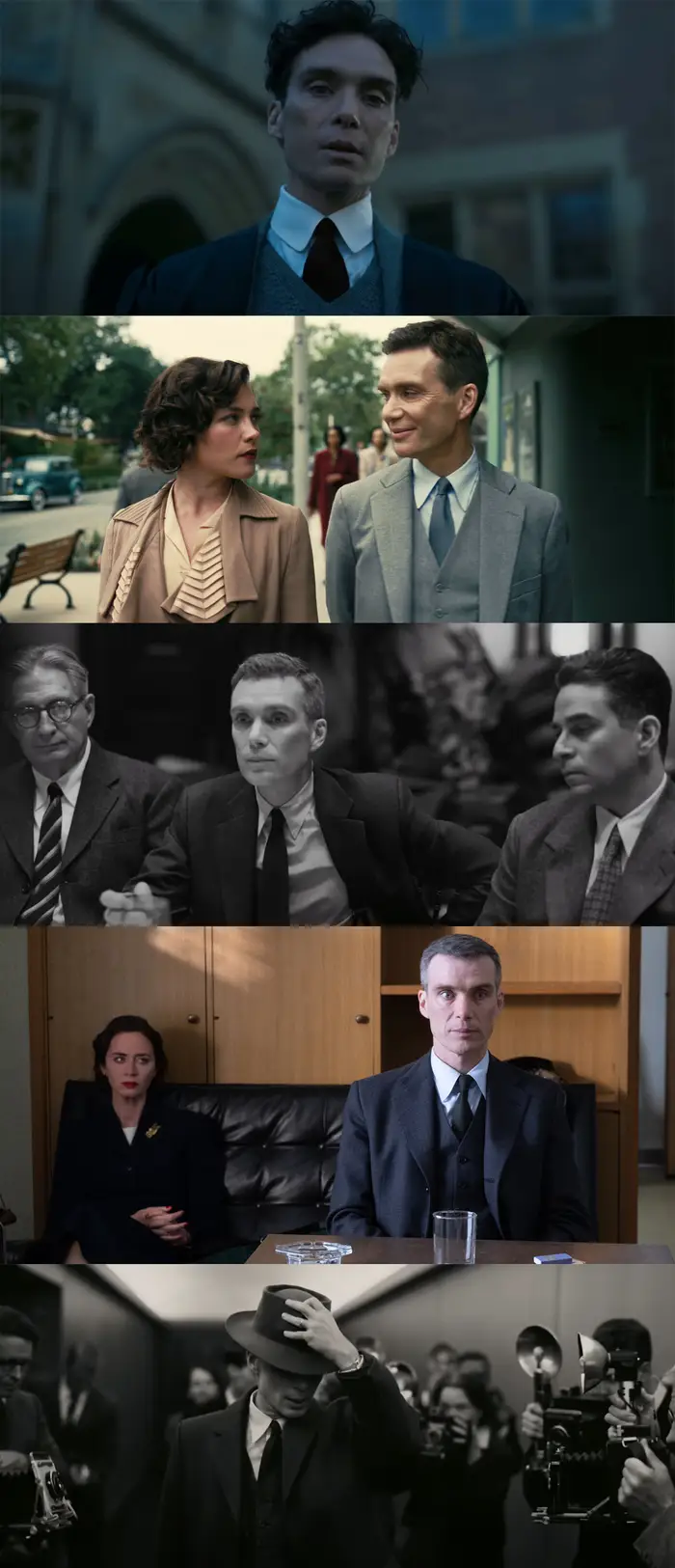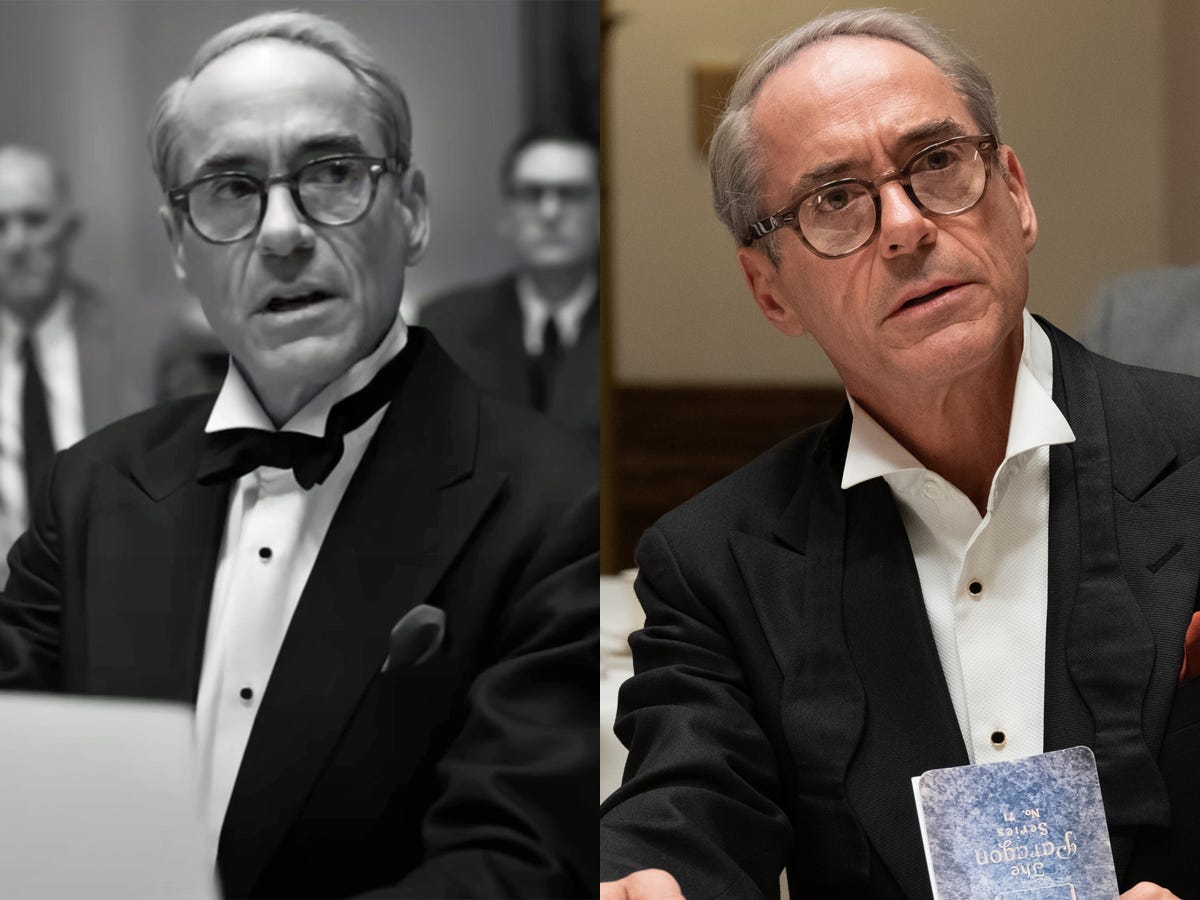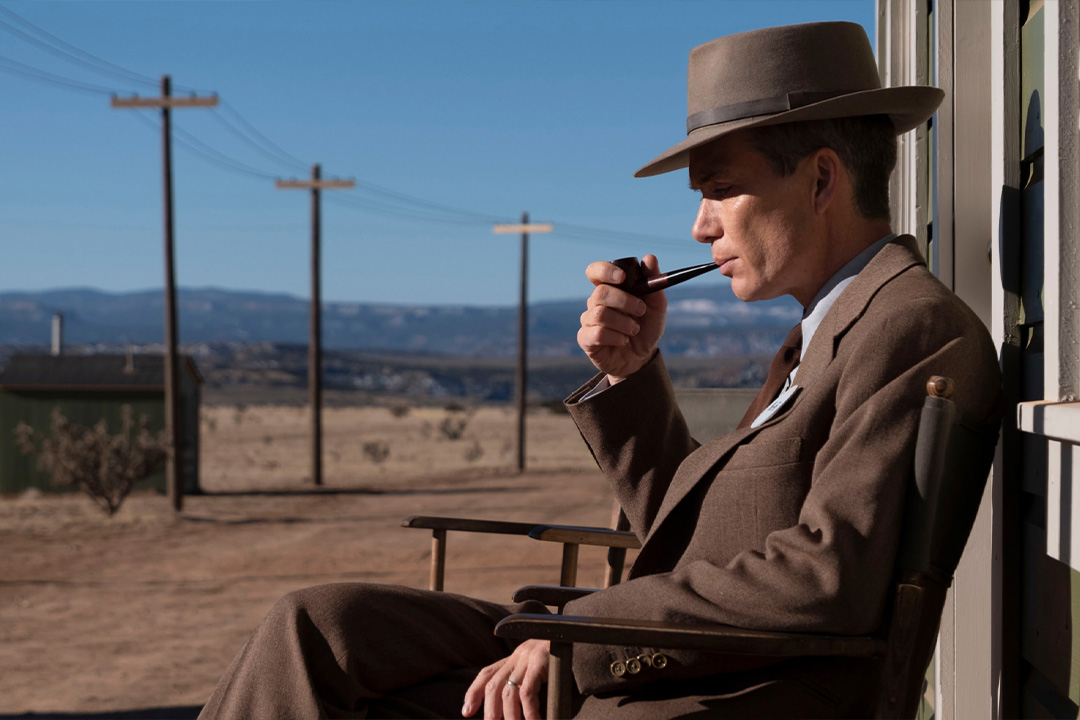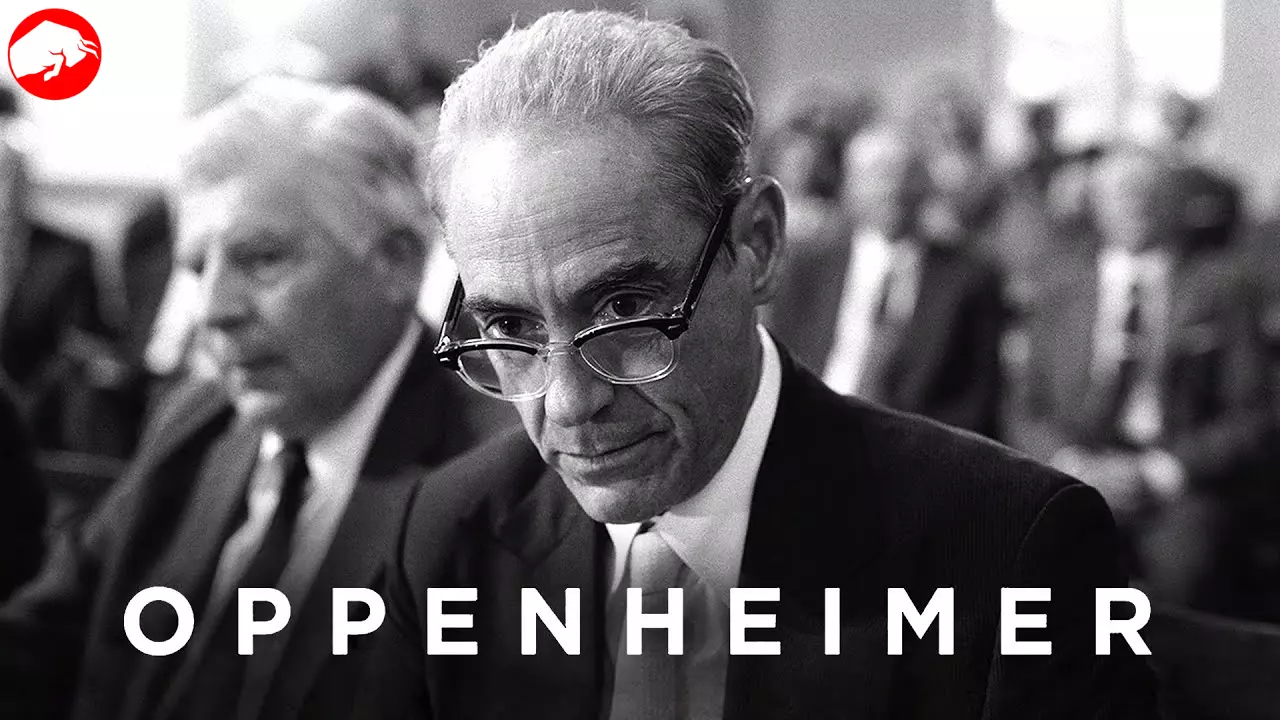Peeling back the layers of Christopher Nolan’s profound directorial decisions is often akin to solving a fascinating, enigmatic puzzle. Each piece leaves us with a sense of marvel, and his latest cinematic endeavor, Oppenheimer, solidifies his standing as a visionary auteur.
You might find yourself bewildered as you settle into your seat, ready to be transported into Nolan’s meticulously crafted world. The film does not adhere to the conventional cinematic narrative as it oscillates with uncanny fluidity between stark black-and-white and vivid color sequences. This noticeable back-and-forth surprises many, but it is not a whimsical directorial whim.
With his consummate craftsmanship, Nolan harnesses the aesthetic power of color to tell his story, bending the traditional function of hues in cinema. Instead of using color and monochrome sequences to depict varying timelines, as is typical in mainstream cinema, Nolan veers off the beaten path. His choice is far from arbitrary.
It’s a carefully curated, integral element of his storytelling technique, a coded language that invites us to explore beyond what meets the eye.
So, let’s embark on a journey to decipher Nolan’s innovative color code. Let’s unravel why certain scenes in Oppenheimer bathe in the richness of full color while others dwell in the shadows of grayscale. It’s time to unlock the secrets in Nolan’s intriguing dance between the monochrome and the polychrome, between the old and the new, and between perception and reality.
Unconventional Use of Color
When we think of color in films, it often acts as an unspoken cue, subtly guiding us through the chronology of events. The vibrant hues of color sequences usually serve as a testament to the present or the future, while the austere charm of black-and-white scenes carries us into the quiet corridors of the past.
However, in the grand tapestry of Christopher Nolan’s Oppenheimer, these preconceived notions about color and its cinematic function are brilliantly disrupted.

In Oppenheimer, Nolan showcases his narrative prowess by skillfully portraying the complex lives of two key characters – J. Robert Oppenheimer, played with emotional depth by Cillian Murphy, and Lewis Strauss, depicted with equal gravitas by Robert Downey Jr. The genius here lies in the compelling performances and Nolan’s refusal to tether color to specific timelines in their lives.
As the movie unfolds, audiences are captivated by the varying visual portrayals of both Oppenheimer and Strauss. Their characters traverse the richly woven narrative without the constraints of a conventional timeline defined by color schemes. Irrespective of the era, be it the vigor of their youth or the maturity of their older selves, both characters are presented in an array of black-and-white and color sequences.
This innovative use of color and monochrome doesn’t adhere to a linear narrative; instead, it births an intriguing dichotomy beyond the traditional use of color in cinema. Nolan’s colorblind approach to chronology creates a layered narrative that invites the viewer to engage on a deeper, more intuitive level.
It invites the audience to unravel the characters and the narrative based on perception and emotion rather than the simplicity of time. The result is a visually stunning, intellectually engaging masterpiece that challenges viewers to question their understanding of color’s role in storytelling.
A Matter of Perspective
In Oppenheimer, Christopher Nolan challenges cinematic norms by eschewing the conventional use of color as a chronology marker. Instead, he transforms the color palette into a powerful storytelling tool, harnessing its potential to offer a unique perspective into the lives of the film’s two pivotal characters – Oppenheimer and Strauss.

Nolan’s distinctive color scheme is a significant character in its own right. He strategically employs different hues to impart the narrative not as an external observer but through the subjective viewpoints of Oppenheimer and Strauss. This refreshing approach encourages the audience to fully immerse themselves in the characters’ experiences and emotions, creating a profoundly engaging cinematic journey.
The scenes awash with color are visual narratives told from Oppenheimer’s viewpoint. They represent the world as he sees it and embody his experiences, thoughts, and feelings. These color sequences breathe life into Oppenheimer’s world, illustrating his professional triumphs, personal struggles, and the complexities of his journey in vivid detail.
They draw us into his world, allowing us to see through his eyes and understand his innermost thoughts.
On the flip side, the black-and-white scenes starkly represent Strauss’s world. This dramatic shift to monochrome offers a stark contrast to the color sequences, enabling us to see Strauss’s perspectives and motivations in a new light. Through this visual dichotomy, we are invited to understand his role in the narrative and comprehend his viewpoints, all depicted with stark honesty in a world devoid of color.
Nolan’s color scheme in Oppenheimer isn’t merely an aesthetic choice. It is a profound narrative device that enables audiences to better understand the characters and the narrative unfolding on the screen. It compels us to step into the characters’ shoes, encouraging a more personal connection to their stories and deepening our investment in their cinematic journey.
Nolan’s Unique Styling: The Intricate Color Play
In Oppenheimer, Christopher Nolan bends cinematic norms and pushes the boundaries of screenwriting. After deep diving into his innovative styling, he opted for a highly unconventional approach while scripting Oppenheimer’s part of the narrative. Eschewing the traditional third-person narrative style, Nolan penned Oppenheimer’s color sequences in the first person.
This artistic decision reflects the director’s intention to invite the audience into the protagonist’s psyche, allowing us a direct, unfiltered exploration of his world.

This bold move, coupled with sporadic instances of surreal imagery, forges a tangible connection between the audience and Oppenheimer. The first-person narrative choice helps communicate the character’s thoughts, feelings, and experiences more personally and intimately. It is akin to peering into Oppenheimer’s diary, gaining insight into his mindset, fears, hopes, and aspirations.
As the narrative weaves its course, these color sequences capture the spectrum of Oppenheimer’s emotional landscape, painting a vivid, immersive portrait of the protagonist’s internal world.
In stark contrast to these immersive, color-drenched scenes, the narrative shifts to a monochromatic palette when the focus shifts to Strauss, Oppenheimer’s counterpoint in the story. The stark black-and-white scenes centered on Strauss oppose Oppenheimer’s vibrant scenes, creating a palpable dichotomy in the film’s visual language.
This strategic use of monochrome for Strauss’s scenes is not a mere aesthetic choice but a meticulously crafted tool that illuminates the dynamic tension between Oppenheimer and Strauss. It effectively highlights the stark differences between their worlds, philosophies, and roles in the narrative.
This deliberate visual disparity underscores the ideological divide between Oppenheimer and Strauss, providing a sharp counterpoint to the richly-hued scenes from Oppenheimer’s perspective.
By employing such distinct narrative and visual styles for the two characters, Nolan has crafted a multi-layered cinematic experience that transcends traditional storytelling, offering a rich exploration of character and perspective that engages audiences on a profoundly intimate level.
The First-Person Narrative: The Oppenheimer Journey
Christopher Nolan’s decision to script Oppenheimer in the first person was not a casual experiment but a calculated move designed to foster a deep connection between the audience and the film’s central character, J. Robert Oppenheimer. This technique breaks down the usual barriers of storytelling, thrusting us into the heart of the action. It’s as if we are journeying alongside Oppenheimer, privy to his every thought, feeling, and challenge.
This narrative approach creates a potent sense of intimacy. We are no longer mere spectators but active participants in Oppenheimer’s journey. We look over his shoulder, step into his shoes, and delve into the labyrinth of his mind. We’re with him as he navigates the convoluted path of scientific discovery, struggles with ethical dilemmas, and grapples with the consequences of his actions. We feel his pride, anxiety, guilt, and resolve as if these emotions are our own.
This stylistic choice amplifies the film’s emotional resonance, rendering Oppenheimer’s struggles and involvement in the devastatingly destructive events more palpable. It adds depth to our understanding of his moral quandary, of his wrestle with the aftermath of an act committed with the right intentions but which led to unimaginable destruction.
According to Nolan himself, the essence of this technique was to meet the challenge head-on of showcasing a complex, real-life character embroiled in a tumultuous chapter of history.
As he puts it, “That was the challenge of the film: To tell the story of a person who was involved in what was ultimately an extraordinarily destructive sequence of events, but done for the right reasons, and tell it from his point of view.”
This challenge has been transformed into a compelling cinematic journey in Nolan’s capable hands. The unconventional narrative technique successfully humanizes Oppenheimer, giving us a glimpse into the moral complexities of a man caught amid a historical whirlwind, thereby making Oppenheimer an emotionally rich, deeply personal, and unforgettable cinematic experience.
Conclusion
With Oppenheimer, master storyteller Christopher Nolan opens the door to a whole new realm of cinematic experience. He doesn’t merely ask you to watch a movie; he invites you on a profound journey that tests the limits of traditional storytelling and challenges you to rethink your approach to cinema. This film does not unfold in the familiar linear progression of events. Instead, it’s a layered narrative that invites interpretation, introspection, and active engagement.
Nolan has always been celebrated for his innovative directorial prowess. In Oppenheimer, he leverages his distinct style to create a rich tapestry of color that serves a purpose beyond mere aesthetics. Each hue, each shift from color to black-and-white, is a deliberate choice designed to offer an intricate narrative depth, simultaneously inviting us into the personal and professional world of J. Robert Oppenheimer.
The visual language of the film so powerfully articulated through Nolan’s strategic use of color, challenges us to venture beyond surface-level viewing. It nudges us to delve deeper, untangle the threads of the narrative woven into each scene, and unearth the underlying emotions and motivations of the characters.
On your subsequent viewing of Oppenheimer, don’t just passively consume the film as a casual observer. Instead, fully immerse yourself in this cinematic marvel. Allow yourself to be drawn into the riveting world of Oppenheimer, observe the color shifts, and interpret their deeper meanings.
Experience the intense emotions, the dramatic tension, and the moral dilemmas that unfold on the screen.

Through Oppenheimer, Nolan reminds us that cinema is not just a visual spectacle but a form of art that can evoke deep emotions, stir thought-provoking discussions, and offer new perspectives. So, in your subsequent encounter with Oppenheimer, don’t just watch – engage, interpret, and truly experience the genius of Nolan’s masterful play with color and narrative.









